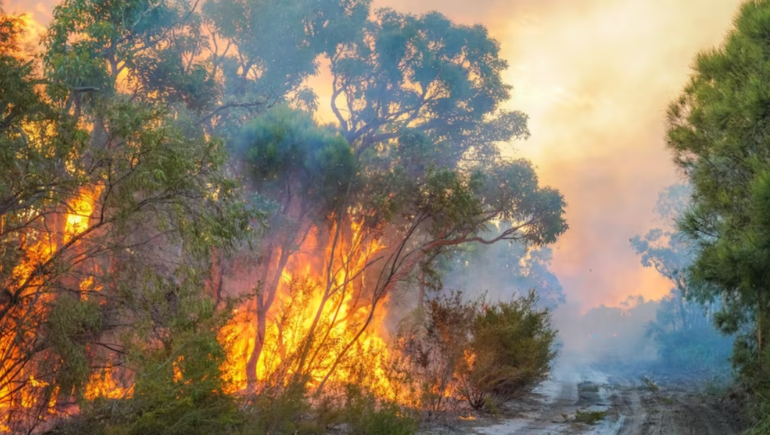TL;DR:
- Australian authorities are increasingly relying on AI to predict, detect, and prevent wildfires in forestry regions.
- The Green Triangle, a major plantation forestry area, is now monitored by AI and satellite technology to detect bushfires.
- AI technology scans for smoke and provides a 20-kilometer radius view with human oversight.
- AI is crucial in preventing the loss of timber-producing forests in Australia, a nation heavily affected by wildfires.
- Researchers are developing a mobile app, NOBURN, that utilizes AI to predict forest fire risks from user-submitted photos.
- AI has the potential to analyze remote or dangerous areas for fire risks.
- Public awareness and collaboration with AI can enhance bushfire prevention efforts.
Main AI News:
Artificial intelligence (AI) is emerging as a game-changer in protecting one of Australia’s vital forestry regions, the Green Triangle. Australian authorities are increasingly relying on AI to predict, detect, and prevent wildfires that threaten the nation’s forests. This innovative approach includes teaching AI systems to identify smoke emanating from timber plantations and using AI to analyze photos taken by bushwalkers to assess fuel levels. The fusion of AI and satellite technology represents a significant leap in monitoring the Green Triangle, a vast plantation forestry area straddling the South Australian-Victorian border.
Quick Detection and Response in a High-Risk Region
Anthony Walsh, the General Manager of the Green Triangle Fire Alliance, emphasizes the importance of rapid fire detection and response in a region where a staggering 25% of the land is covered by forestry estates, intertwined with farms, townships, and natural bushland. “The sooner we know about fires, the sooner we can put them out, reducing damage to the entire community,” says Mr. Walsh.
Innovation Takes Flight
The Pano AI system, introduced commercially for the first time in Australia this fire season, is set to be deployed in eight fire towers across South Australia and several more in Victoria. This cutting-edge technology scans a 20-kilometer radius for signs of smoke. Each location boasts two cameras with a 180-degree view, providing an unobstructed line of sight. However, human oversight remains crucial, as AI occasionally struggles to differentiate smoke from clouds or dust. To prevent information overload, a human operator reviews the feed and confirms whether it’s a genuine fire or a false alarm. Additionally, the camera features a 30x optical zoom, enabling operators to closely examine potential threats.
Preserving Timber Production
The importance of AI in protecting Australia’s valuable forests cannot be overstated. Professor David Lindenmayer from the Australian National University highlights the urgent need for AI to safeguard timber-producing forests. Recent international research has revealed that up to 35 million hectares of such forests were lost to wildfires in the two decades leading up to 2021, placing global timber production at risk. Australia, unfortunately, stands out as one of the worst-affected nations, second only to Portugal.
Embracing New Technologies
Professor Lindenmayer calls for the embrace of new technologies, including drones, AI, and lightning-strike modeling. Detecting fires more effectively and suppressing them rapidly is essential to mitigate the devastation caused by high-severity wildfires. Understanding the flammability of vegetation and identifying ignition points are also critical components of this strategy.
A Collaborative Approach
Assessing forest fuel loads across Australia, a vast and diverse country, presents a formidable challenge. Researchers are exploring ways to engage the public through AI. Teams at Adelaide University and the University of the Sunshine Coast have developed a mobile app called NOBURN, which scans user-submitted photos to predict forest fire risks. The AI within the app mimics the work of human experts, estimating the severity and potential spread of potential bushfires. This collaborative effort between AI and citizen science can help authorities make informed decisions about backburning and other preventive measures.
AI’s Reach in Remote Areas
AI’s potential extends to providing risk analyses for remote or hazardous areas that may be difficult for human exploration. The versatility of causal AI, capable of learning from various data sets, allows it to identify patterns and predict risks effectively. This capacity for problem-solving mirrors the capabilities of advanced AI models like ChatGPT.
Sparking Interest and Awareness
Professor Javen Shi, from Adelaide University, hopes that the NOBURN app will not only aid in predicting and preventing bushfires but also raise public awareness of AI’s potential in this crucial area. Greater understanding and collaboration among authorities, experts, and citizens can lead to more effective firefighting resource allocation.
As we witness the integration of AI into the battle against bushfires, it becomes increasingly evident that innovation and collaboration are key to safeguarding Australia’s precious forests and communities. The NOBURN app serves as a testament to the potential of AI and citizen involvement in this critical endeavor.
Conclusion:
The integration of AI into bushfire protection in Australia’s Green Triangle signifies a significant advancement in forest preservation and community safety. This development opens up opportunities for AI technology providers to enter the market and collaborate with governmental and research institutions to further enhance forest fire prevention and mitigation strategies. Public engagement and awareness about AI’s role in safeguarding forests and communities can drive positive changes and innovation in this sector.

